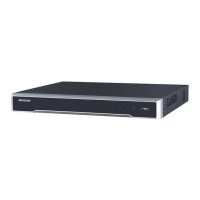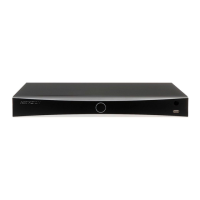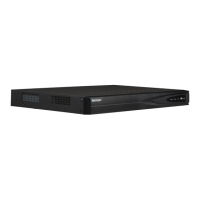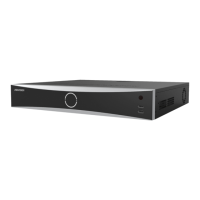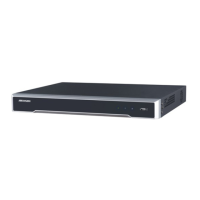
Do you have a question about the HIKVISION DS-7608NI-K2/8P and is the answer not in the manual?
| Input bandwidth | 80 Mbit/s |
|---|---|
| Output bandwidth | 160 Mbit/s |
| Maximum resolution | 3840 x 2160 pixels |
| Alarm input channels | 4 |
| Video input channels | 8 channels |
| Alarm output channels | 1 |
| Supported resolutions | 3840 × 2160, 2560 × 1440, 1920 × 1080, 1600 × 1200, 1280 × 1024, 1280 × 720, 1024 × 768 |
| Video formats supported | H.264, H.264+, H.265, H.265+, MPEG4 |
| HDMI output | Yes |
| Networking standards | IEEE 802.3af, IEEE 802.3at |
| USB 2.0 ports quantity | USB 2.0 ports have a data transmission speed of 480 Mbps, and are backwards compatible with USB 1.1 ports. You can connect all kinds of peripheral devices to them. |
| Ethernet LAN data rates | 10, 100, 1000 Mbit/s |
| Ethernet LAN (RJ-45) ports | 9 |
| Supported network protocols | TCP/IP, DHCP, Hik-Connect, DNS, DDNS, NTP, SADP, SMTP, NFS, iSCSI, UPnP, HTTPS |
| Power over Ethernet (PoE) ports quantity | 8 |
| HDD capacity | 0 GB |
| HDD interface | Serial ATA |
| Maximum storage capacity | 12 TB |
| Number of HDDs installed | 0 |
| Number of HDDs supported | 2 |
| AC input voltage | 100 - 240 V |
| Power consumption (typical) | 15 W |
| Total Power over Ethernet (PoE) budget | 120 W |
| Operating temperature (T-T) | -10 - 55 °C |
| Operating relative humidity (H-H) | 10 - 90 % |
| Product color | Black |
| Rack capacity | 1U |
| Wi-Fi | No |
| Depth | 315 mm |
|---|---|
| Width | 385 mm |
| Height | 52 mm |
| Weight | 3000 g |
Steps for powering on, shutting down, and activating the NVR.
Procedures for logging into and out of the NVR system.
Steps to reset the NVR administrator password using a GUID file.
Guide to the initial setup wizard for basic NVR configuration.
Steps for adding and connecting IP cameras to the NVR.
Details on various operations and functions available in live view.
Procedures for setting up PTZ camera parameters and controls.
How to configure PTZ presets, patrols, and patterns for camera movement.
Settings for image quality, stream type, resolution, and video encoding.
How to set up schedules for recording and capturing events.
Setting up motion detection parameters and trigger actions.
Configuring recording and capture based on alarm inputs.
Setting up recording triggered by Video Content Analysis (VCA) events.
Methods for playing back recorded video files.
Using smart search features for efficient video playback.
Searching and playing back files based on specific event types.
Procedures for backing up record files to various devices.
Backing up files using normal video or picture search.
Backing up event-related record files.
Configuring motion detection parameters and alarm actions.
Handling actions for external sensor alarms.
Detecting video loss on a channel and configuring alarm responses.
Triggering alarms for video tampering and setting response actions.
Defining actions such as event hints, full screen monitoring, and email notifications.
Configuring face detection function and actions when alarm is triggered.
Setting up vehicle detection for road traffic monitoring and license plate capture.
Detecting people, vehicles crossing a virtual line and setting alarm actions.
Detecting objects entering or loitering in a pre-defined virtual region.
Detecting people or vehicles entering a pre-defined virtual region.
Searching for detected face pictures and related video files.
Searching for suspicious behavior based on VCA detection.
Searching for vehicle plate pictures and related information.
Configuring basic network parameters like IP address and working mode.
Setting up RAID arrays for data redundancy and performance.
Steps for initializing newly installed hard disk drives.
Procedures for upgrading the NVR system firmware.
Solutions for common issues and problems with the NVR.



